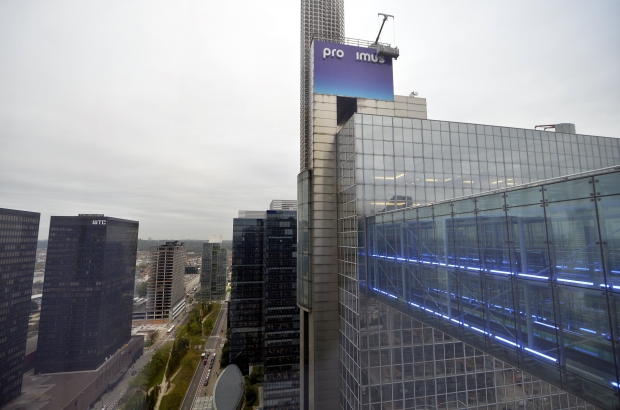- Daily & Weekly newsletters
- Buy & download The Bulletin
- Comment on our articles
Green light to transform Proximus towers
Two major landmarks near Brussels-North station, the Proximus towers on Boulevard Roi Albert II, are to be renovated to the benefit of the local area.
One will continue to accommodate offices with common sport and leisure areas and the other will become a purely residential block.
The Proximus towers were built in 1994-1996 by Jaspers and Partners architectural firm, in the spirit of the 1960s Manhattan plan that prioritised office space.
But Brussels secretary of state for town planning and communities Ans Persoons has now announced that the Brussels region has given planning permission for a total makeover.
The 134 metre-high buildings (including the spire), formerly known as the Belgacom towers and also the Tours Pléiades, are currently dedicated 100% to offices.
After renovation, they will feature communal sporting and play areas, a large semi-public courtyard and new green interior and exterior areas. For example, part of level -1 is to demolished and transformed into a green space.
The most drastic changes concern the South Tower, which will be converted into residential accommodation.
There will be 272 units and 93 student rooms (kots), spread over almost 43,000m². The North Tower will keep 60,000m² for Proximus staff for offices that will be mainly designed as collaborative spaces.
The entire project – governed by a hefty 60-page permit document – will include 12,000m² of community facilities such as a sports centre, auditorium, green roof terrace, and no less than 5,600m² of shops.
There will also be 516 underground parking spaces, 21 spots for motorcycles and a place to house 881 bicycles.
Real estate development company Immobel, responsible for the renovation, emphasises the project’s environmental benefits. It says that the buildings will occupy less floor/land space after the transformation.
The aim is to retain at least 75% of the existing structure to reduce the project’s carbon footprint. In addition, existing materials will be reused or recycled on site or elsewhere as much as possible.
The Brussels-based company adds that one of the main aims of the redevelopment is to reconnect the site with the neighbourhood.



















